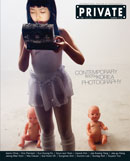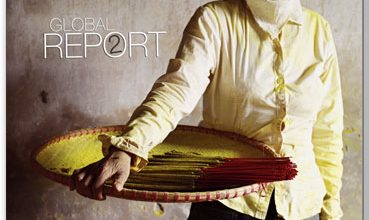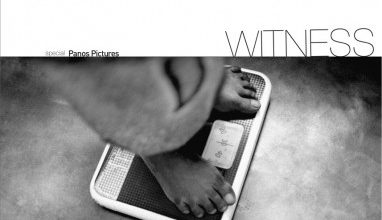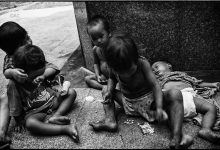
Buy / Gift this issue [E]ven though it has been only about 10 years since photography was included in art in Korea, photography is becoming the very basics and center of the whole art field as it goes through amazing changes. Throughout the whole genres of art, photography has the largest number of consumers and producers. We are living in the era that anyone who owns a digital camera takes, makes, and enjoys a picture. Photography is riding high, propelled by its strong popularity and artistry. Along with remarkable development of DSLR cameras, densely wired internet network also helped to open the democratization of photography. The voice of photographers has never been more powerful than today.
Up until the mid 1990’s, the main current of Korean photography has been works that are based on photography’s ability to ‘represent’ and ‘document’ the reality. That is why the debate on ‘whether people make or take photographs’ was so heated. There was even a now meaningless battle over the artistic value between the picture taken straight and the one made by cutting, pasting, and manipulating with graphics softwares. It was only ten years ago that it happened.
Then, how does the photography in Korea look like now? Where did the pictures we call ‘contemporary’ come from? In addition to development of digital technology, the most important mainspring is that the perspective of photographers on ‘act of photographing’ that adds ‘doing’ to ‘taking’ and ‘making’ has expanded and strengthened. It means that the concept of photographers became distinct; to have a distinct concept is essential in contemporary photography field and it becomes richer as not only photographers but also artists in other fields increase their range of activities based on photography.
When we look at contemporary photography in Korea, we find out that it is based on the early works of photo history or photographs in modern times. Taking pictures of performances and happenings is in the same vein as land artists in 1960’s and 70’s. Tableau photography that constructs a scene before the camera grounds on the photograph of a misfortunate photographer, . Early portrait pictures are also frequently applied by contemporary photographers for their items. We can see that precedents and challenges by pioneers of photography still exert their influences on contemporary photography.
Above this, there are photographs that constantly give out a question of ‘why does one photograph this?’ to audience. These are what we call ‘deadpan’ pictures. These deadpan pictures often confuse the audience even more with its lavish quality and gigantic size. By taking space, objects and people that we usually do not pay attention to as their subjects, their methodology tries to represent and dissect the so-called ‘other domain’ that modernism dismissed such as human body, everyday life, lives of women, a part of diary, and seeks the visual effect.
On the other hand, there are a group of photographers who challenge ‘originality of work, genius of artist and authenticity of photography’ that decide the aura of photography as art. They subvert the history of understanding and desire of photography in detail.
There are also photographers who defend their own perspectives persistently. They hold fast to analogue black and white prints and are loyal to modernistic esthetics of photography. They enhance the esthetics of Stieglitz’s Equivalent by concentrating on tones and framing in photography.
In order to figure out how contemporary photography in Korea can bear such diverse and multiple voices, we need to look into the change of circumstance that surrounds photography. Exuberant interest of media and galleries played a part in diversifying the quality and quantity of photo works. Besides, as work of documentary photographers including journalists are displayed in gallery spaces naturally and represented in order to be included in art collections, it became an opportunity to investigate and reflect on documentary photography in general.
Here, it starts from now. This is the time for Korean photography to take strong root, when it is flourishing. In my opinion, photography is way too complicated. To speak about the identity of photography, we continuously need to contemplate the photography market, custom-related to the act of photographing, humanities and social science, and the relationship between history of human life and photography. Photographers have to reflect upon ‘why I photograph’ and we desperately require the depth and variety of critique that can see and interpret the photograph properly, receptive capacity of galleries in multiple phases, and competence of curators to plan what kind of discourses would be formed in photography.
In the end, the question of how much cultural and esthetic value photography has in the era of mass media is handed over to the task of forming an active photography field where the photograph is produced, accepted and read properly.
(by Yeonha Choi)









